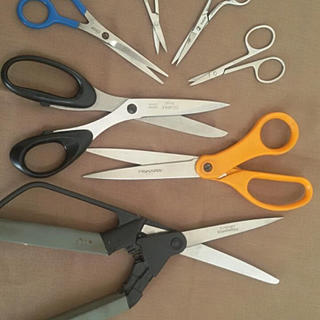A Little Advice from The Blade Doctor
- Gabriel Frankewich
- Oct 29, 2017
- 2 min read
Many people want their knives sharpened quickly. Many buy into the hype of at-home pull-through or electric grinding devices for their sharpening needs.
At a first glance, you end up with 1 of 2 possibilities: One, you end up with a electric machine that grinds at too high of speed with no cooling method, such as water, and it ends up burning the blade or, because you put too much pressure on it when you pull your knife through, ends up grinding a belly or bow in your blade. Two, you end up with a standard pull through sharpener (non-electric). These come in two varieties: 1) A black or dark colored “V” shape or 2) a white rounded “V” shape. The dark square looking V shape is carbide steel which is harder than regular steel; so when you pull your knife through, it tears away from the sides of the apex of your cutting edge. This gives you a momentarily sharp edge, but also unnoticeable micro-fractures in your steel. I have seen this process many times cause irreversible damage to the blade. The 2nd of your V-shaped sharpeners are normally little white bars of ceramic material that normally will not sharpen your knife, but at times can take off burrs and help maintain an already sharp edge.
One of the main problems that arises from using devices like these is sharpening a knife with a bolster. The bolster material is not being reduced as the sharpening process commences. So the bolster ends up sticking out below the cutting edge of your knife.
Why is this a problem?

It's all about geometry and how a blade is designed to work for you. When a bolster sticks out farther than the blade is able to cut, the bolster rests on the cutting surface before the blade the item being cut no longer has the opportunity to be cut cleanly through. This in turn causes the one holding the knife to become frustrated, having to use unnatural motions with the knife to cut the food, and possibly hurt oneself in the process .
Every GOOD sharpener knows to reset the geometry of a knife when sharpening. This means to adjust the bolster accordingly to the cutting edge, keeping balance to the entire length of the blade.
The bolster of a knife is very important for the balance of the blade. When steel is removed, the balance is off from the center point, which is the bolster. Reducing the bolster along with the edge of the blade will help keep the proper balance so when you're cutting, it seems to be effortless, especially when you're properly holding the blade in the pinch grip position.
To sum It up, geometry is everything when it comes to a blade. If you do not know how to properly sharpen your knives at home, look for a reputable sharpener who understands balancing blades after they've been sharpened. Try to find someone who can take off the most minimal amount of steel to bring back the life of your blades. You'll be much happier with the result.

















Comments